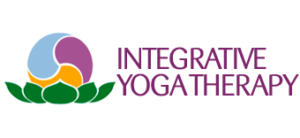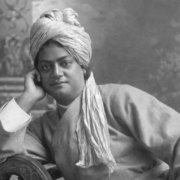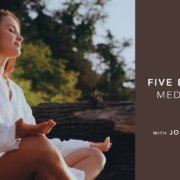Posts
A Yoga New Year’s Resolution
Patanjali Yoga Sutras 1.1 is “atha yoga anuśāsanam”
Therefore, (when the student is prepared), instruction in Yoga (begins).
The decision to begin the Yoga journey is a crossroads where we choose consciously between ways of doing and being that cause limitation and suffering and the journey of Yoga that leads to greater joy, equanimity and clarity.
Along this journey, we also open to receive enhanced levels of health and vitality that are an essential support for our journey.
This crossroads is even more important as we enter the New Year which is traditionally a time for affirmations, resolutions and new beginnings.
In order to create positive affirmations for the new year, you will explore four different facets of daily living.
Within each one, you will reflect on your attitudes and tendencies before you begin practicing Yoga, and how they have evolved since Yoga practice began.
With this clarity, you will then create an intention for further growth and transformation in the new year.
Watch the video and let’s meditate together!
Happy 2023!
Joseph Le Page and Integrative Yoga Therapy Team
Samkhya Philosophy for Children of all Ages
Once upon a time, there was a planet called Purusha. You could say that Purusha was a perfect place to live; everyone was happy and there was a sense of timelessness and limitlessness. In fact, the people of Purusha were complete in every way. The only problem was that in all that vast kingdom there wasn’t a mirror to be found. Without a mirror, the Purushans couldn’t see themselves, so although they were perfect, they had no way to recognize or become aware of their inherent perfection. This absence of a mirror in which to see their own reflection, is the source of a desire or longing to go in search of a way of Self-knowing.
One day, the Purushans heard about a far-away planet called Prakṛti where it was possible to know oneself in a world of duality, with the world out there and a separate “me” to experience it. This world of duality could be experienced through sound, touch, sight, taste and smell, so it was indeed a mirror for all five senses. By traveling to Prakṛti, the Purushans would be able to have all the limitless peace and joy of planet Purusha and also to be conscious of it; a journey of exploration and learning, to return to Purusha both whole and aware of their wholeness.
To make the journey to planet Prakṛti, the Purushans needed spacecraft that could withstand the atmosphere when they arrived, so they built their ships from the same five elements that comprise planet Prakṛti – earth, water, fire, air, and space. Each ship was hand-crafted and had individual characteristics, but overall, they fit into three basic models: the kapha ships were dense and solid, the pitta ships were fast and fiery, with powerful engines, and the vata models were light and quick.
 The ship itself is called the Body. At the center of each ship is the principal passenger called Spirit, which carries the essence of limitless freedom and consciousness, the hallmark of planet Purusha. Each ship also has a pilot called “Mind”. Body, Mind, and Spirit must work together to make the journey, with the understanding that both the body and the mind are ultimately vehicles for the journey of the Soul toward Self-knowledge.
The ship itself is called the Body. At the center of each ship is the principal passenger called Spirit, which carries the essence of limitless freedom and consciousness, the hallmark of planet Purusha. Each ship also has a pilot called “Mind”. Body, Mind, and Spirit must work together to make the journey, with the understanding that both the body and the mind are ultimately vehicles for the journey of the Soul toward Self-knowledge.
At the beginning of their journey, the Purushans installed a powerful transmitter in space so they would always be in touch with planet Purusha. This transmitter to and from Purusha was called Mahat, which means “the great” so that the essence of wholeness and limitless which are the hallmarks of planet Purusha would never be lost. Each spacecraft also had an ultra-intelligent on-board computer, called Buddhi, to make sure that signals coming from Purusha were received and transmitted to the pilot to guide the ship to planet Prakriti and to return to planet Purusha. Each ship has its own unique identity or sense of individuality since each is a unique combination of the five elements, so that the journey and destiny of each is unique, both in the journey to prakriti and the way of return to Purusha. This unique and individual identity for each traveler is called Ahamakara, which can be loosely translated as – I want to do it my way!
While each ship has a unique journey, overall, they fall into three basic categories. The kapha ships are heavy and slow but make steady progress. The pitta craft excel in speed and performance, but when things go wrong, time is lost looking for who to blame. The vata craft have the most exciting journey, exploring different universes and planets, but often forgetting where they left the keys to the spaceship. In the end, all the spaceships arrived at the same time.
As they near planet Prakṛti, the pilots prepare the sensing devices they need for exploration. One set of sensing devices is the jnanendriyas, or instruments of knowing, including the ability to smell, taste see, touch and hear. The others are instruments for action called karmendriyas, such as ability to speak, touch, move, grasp, eliminate waste, and even to procreate little Purushan ships as the complete journey may take more than one generation.
As the ships near planet Prakṛti, they encounter a series of unexpected storms that form part of its atmosphere. There are storms of tremendous energy and turbulence, called rajas. There are also doldrums, called tamas, in which nothing moves at all. These cycles of rajas and tamas are interspersed with moments of perfect balance, called sattva, when the journey flows smoothly and effortlessly.
All the ships manage to reach planet Prakṛti, but the journey is a difficult one. Many of the pilots arrived traumatized and suffering from chronic recurring amnesia in which they forget their original mission of exploration and Self-knowledge in order to return to planet Purusha. They come to believe that they are their ships comprised of the five elements and use their senses and organs of action to seek pleasure and avoid pain believing prakriti and its experiences to be their sole reality, while the passenger and the reason for the journey, Spirit is completely forgotten or is just a distant memory. With their original mission forgotten, their time is spent at the mall looking for items to beautify the ship or on vacation taking selfies.
This pattern of driving their ships around in circles to stay busy, while never finding life’s true purpose or meaning is called, Samsara, which literally means, going around in circles. But no matter how much they try to stay busy to avoid looking at their lives more deeply, there is a subtle inner voice coming from Spirit, telling them that there must be some deeper purpose and meaning for living.
Those who hear this message more clearly are the Rishis, or seers, and Gurus, the ones who can lead the people from the circular patterns of planet Prakṛti, back to the remembering who they really are as citizens of Purusha. These pioneers are also called Yogis which means to join, or in this case to reunite with who we are as Spirit.
Those that decide to make the journey home to Purusha first need to repair their ships from the damage caused by the chronic stress and sensory overload that is the nature of a planet under the sway of the three gunas and the constant roller coaster of ups and downs. These repair stations use a science called Ayurveda to rebalance the five elements from which the ships are made. Sometimes all the ships’ systems must be completely cleaned out in a process called Panchakarma. Once in balance, the ships need a path for their journey home, and one of the clearest of these is by the Sage Patanjali: A manual on the return to Planet Purusha in 8 steps, called Ashtanga Yoga.
The first two steps, called yama and niyama, are guides for conduct and behavior on the journey home. The third step, asana, is a guide for keeping the ship stable and comfortable to ensure its safety along the way. The fourth step, pranayama, involves having adequate energy for the journey and using this energy wisely. The fifth step, pratyahara, is removing the attention of the pilot from all of the distractions on planet
Prakṛti so they can focus on their journey of return. The sixth step, dharana, is setting a steady one-pointed course and staying that course all the way home. The seventh step, dhyana or meditation, is the journey itself, with all the ship’s systems functioning spontaneously and effortlessly, guided by Buddhi in contact with Mahat to maintain a continuous communication with the energy of peace and joy from planet Purusha.
Through the methodology of Asthanga Yoga, many of the ships can return home, and once there, reassume their true identity as citizens of planet Purusha and return to a state of peace, wholeness and harmony called samadhi, the final step of the eight-limb journey. These explorers, however, are not the same as when they left. Now they have a mirror of consciousness. They know planet Prakṛti and the world of duality and now, returning home to planet Purusha they are complete and whole and know it to be so.
The final and deepest learning from this journey is that planet Purusha and planet Prakṛti are actually one. The world of matter and the world of spirit are not opposed to each other and our own version of planet Prakṛti, called Earth, is calling out for us to treat her with love and reverence so that Purusha and Prakṛti may live together in peace and joy happily every after.
5 Elements Meditation
Within the Yoga philosophy, all creation is composed of the FIVE elements: Earth, Water, Fire, Air and Space.
Our bodies and minds are also composed of these FIVE elements.
Each element is located in a specific area of the body and is also related to one or more body systems.
Each element has a symbol, a mantra or sacred sound, and is also related to a facet of the natural world.
Through meditation on the 5 elements and their various attributes, we cultivate perfect balance of our bodies and minds as doorway to absolute health in the form of recognition of our spiritual being.








